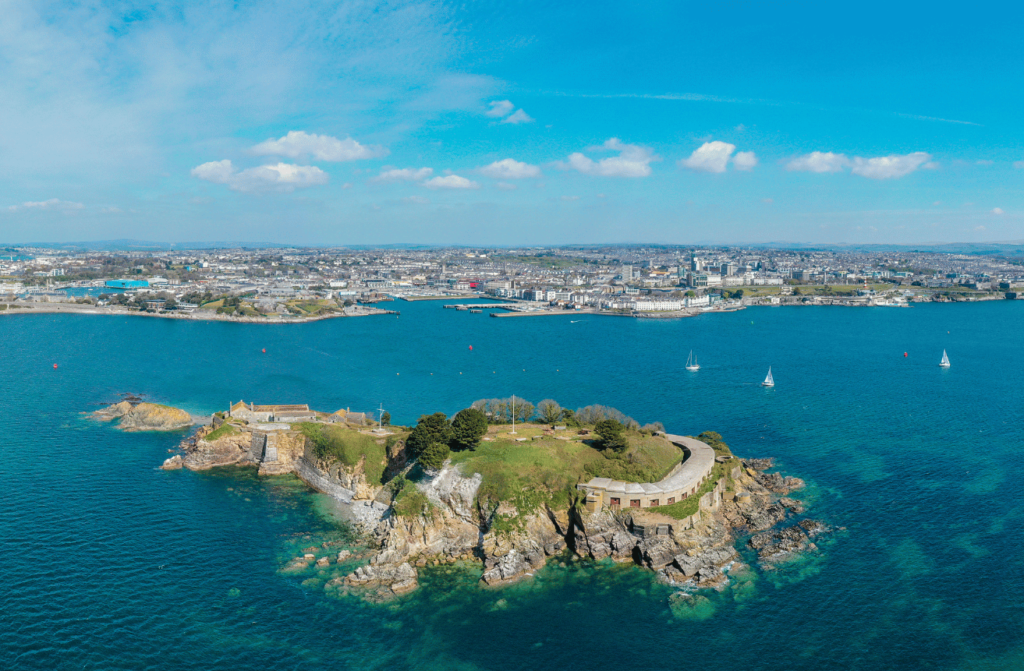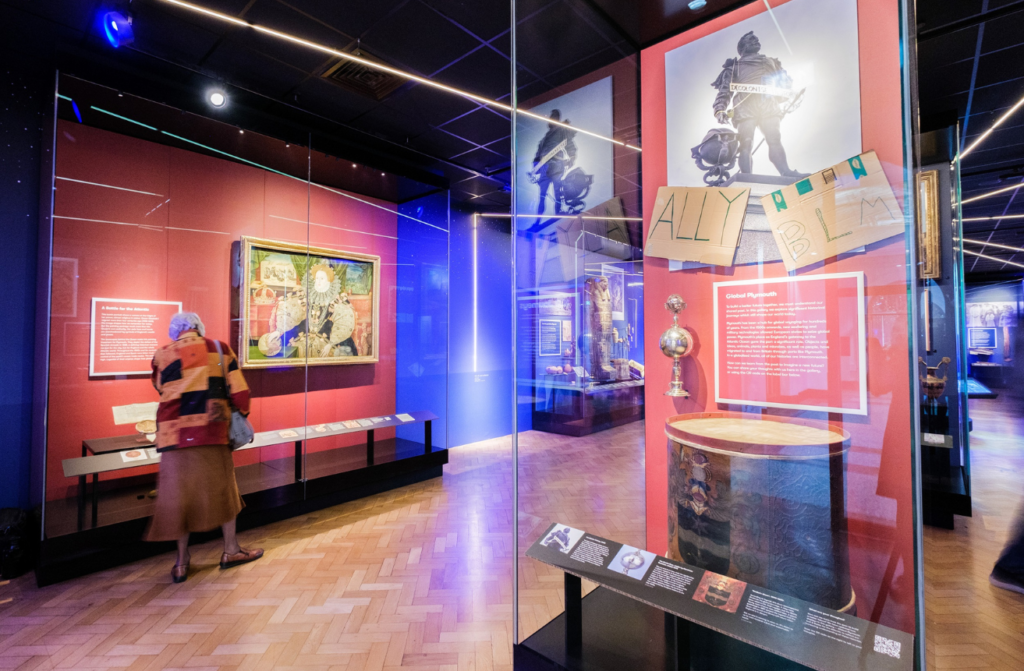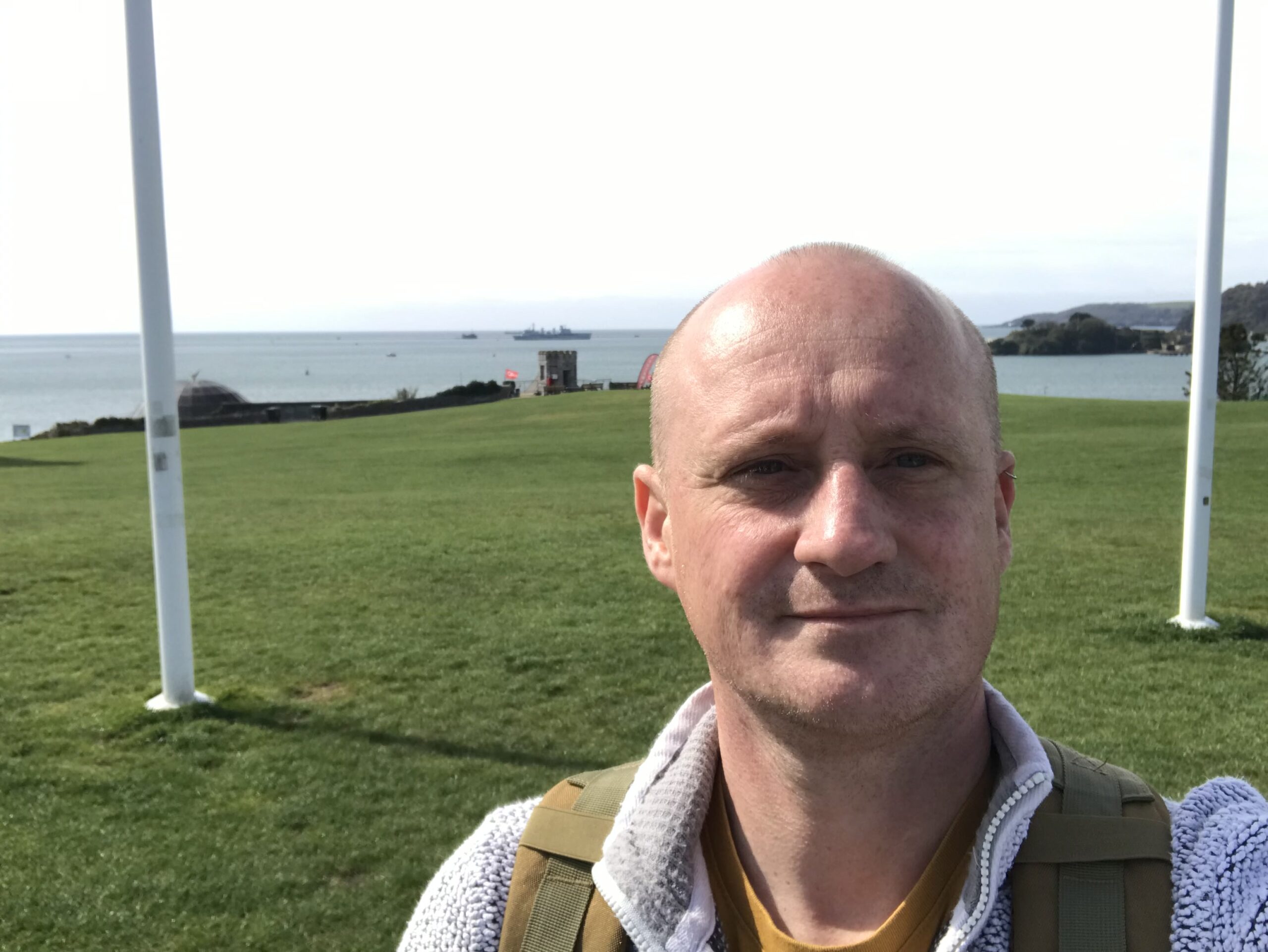Guest blog by Christopher Jefford, Environmental Science student at University of Plymouth and NMP intern.
I’m originally from Lyme Regis, Dorset and have a maritime background. I was brought up to have great respect for the ocean and the diverse wildlife that it supports. This has evolved into a passion for diving, and marine conservation sharing my knowledge and experiences of the marine environment, empowering people to explore and get involved in blue spaces locally.
The History
Drakes Island is situated in South West England between the coastlines of Mount Edgcumbe, Cornwall and Plymouth, Devon. The Island’s geological bedrock comprises of Devonian limestone and fossilised rhyolite lava and ash formed during the Devonian age from fossilised marine organisms. Originally Drakes Island, and what would be later known as Great Britain, were part of one of the two supercontinents called Euramerica and the other being Gondwana.
The Devonian period of the Earth’s history (350 million years ago) is symbolic of high water levels and numerous marine species that lived off the coast. As these organisms died and drifted to the seabed they were compacted under the pressure of the ocean, turning them into fossils and creating the unique Devonian limestone bedrock layer that is symbolic of Plymouth Sound and the Devon coast.
Around 335 million years ago continental drift formed one land mass called Pangea. During this phase, Great Britain was situated near a large volcanic mountain range caused as the two continents pushed together. It is thought that the last volcanic activity in this area happened around 290 million years ago. It is from these volcanic lava episodes and the ash produced that helped to form the other elements of the local geology. The type of lava is known as rhyolite, this type of lava oozes out of lava tubes rather than through volcanic eruptions. Some of these fossilised rhyolite flows can still be seen today between Cawsand and Kingsand in Cawsand Bay, just across the Sound from Drakes Island.

Around 8,000 years ago after the last ice age, the land bridges flooded separating Great Britain from Europe and Drakes Island from Mount Edgcumbe in Cornwall about 3,000 years ago creating the land masses we see today. Initially, Drakes Island was relatively bare, all the flora (trees and flowers) that are currently on the island were planted there from cuttings taken from the mainland by Plymouth City Council during the 1970’s whilst an adventure centre was run there. One of the famous guests that attended during this time was the son of the assassinated US president JFK who learnt to sail here.
Drake’s Island was originally known as St. Nicholas Island, after the chapel that was originally situated there. Due to its geographical location, making it hard to attack it was used as a refuge in 1549 by protestants during the ‘prayer book uprising’. Here it gained its strategic importance during Henry VIII’s reign through the development of the English cannon industry to protect Plymouth. 1550 witnessed the chapel being dismantled and recycled to produce the Tudor forts.
Many well know historical figures have departed from Drake’s Island over the years as they left England to circumnavigate the world on journeys of discovery and adventure. Some of these include Sir Francis Drake, Captain J. Cook, and Charles Darwin. In 1577 Sir Francis Drake left Plymouth to circumnavigate the world, returning in 1580 and being made Governor of Drake Island (1583) by Elizabeth I. It was at this time that the Island was first fortified to protect Plymouth to withstand the threats from Spain and France. This role continued right up till the second world war, seeing the Island handed back to the Duchy of Cornwall from the MoD in 1960’s.
The Myths
Drake’s Island Tunnels
The mysterious nature of the Island has led to many myths being developed over the generations. One of the most well-known myths is that of the ‘Drake’s Island Tunnels’. The myth states that during its military history, tunnels were built to link it to the Hoe as a method to resupply the Island defences. These tunnels have yet to be found, however, since a large area of the Island is still unexplored it is thought by many that this myth might still be true rather than local folklore.
Drake’s Drum

It is reportedly said that Drake sailed with his personal drum, an early European side drum that was emblazoned with his coat of arms. It was one of thirteen drums taken with him on his final and fateful voyage to the Caribbean 1596. It is said that he ordered the drum to be returned to his home in Devon, Buckland Abbey whilst off the coast of Panama. He is said to have vowed on his death bed “if England was ever in danger and the drum was sounded, he would return to defend England”.
It is also said throughout history to reportedly drum itself in times of peril:
When the Mayflower left Plymouth for the New World – 1620.
When Napoléon Bonaparte entered Plymouth as a prisoner onboard the Bellerophon.
1914 on the outbreak of WW1.
1918 on HMS Royal Oak just before the German fleet surrendered.
During the evacuation of the British Expeditionary Force from Dunkirk.
It was also claimed to have been heard beating during the Battle of Britain in 1940 by two British Army officers and in 1982 during the Falklands War. The last time it was said to have been beaten was on the 7 July 2005 during the terrorist attacks in London.
The drum can be seen on display in the 100 Journeys gallery at The Box.
The Royal Navy tradition of “Beat to Quarters” is thought to date back to Drake as a way of summoning the ship’s hands (sailors) to their stations for action against the enemy. In the Royal Navy this later evolved around 18th Century, where the rhythm beaten was “Heart of Oak” which is still used today on ceremonial parades such as Remembrance Day.
Drake’s Island Today
Today Drake’s Island is open once again to visitors, offering guided tours that last over 2 hours, tickets can be purchased on the island’s website. Tours include the heritage of the island and its historic infrastructure; the island’s wildlife reserve which boasts of a rich, biodiverse antennary that includes the protected ‘Little Egrets’, bees, butterflies, insects and mammals. Drake’s Island is working with the National Marine Aquarium and Plymouth Sound National Marine Park to protect, preserve and educate on all areas of marine life around the island as it is situated in a marine conservation area. Drake’s Island can be accessed by a ferry from Plymouth Barbican. It is also a great location to explore by paddle boarding or kayaking but take extra care of Royal Navy and European ferry maneuverers around the island.


